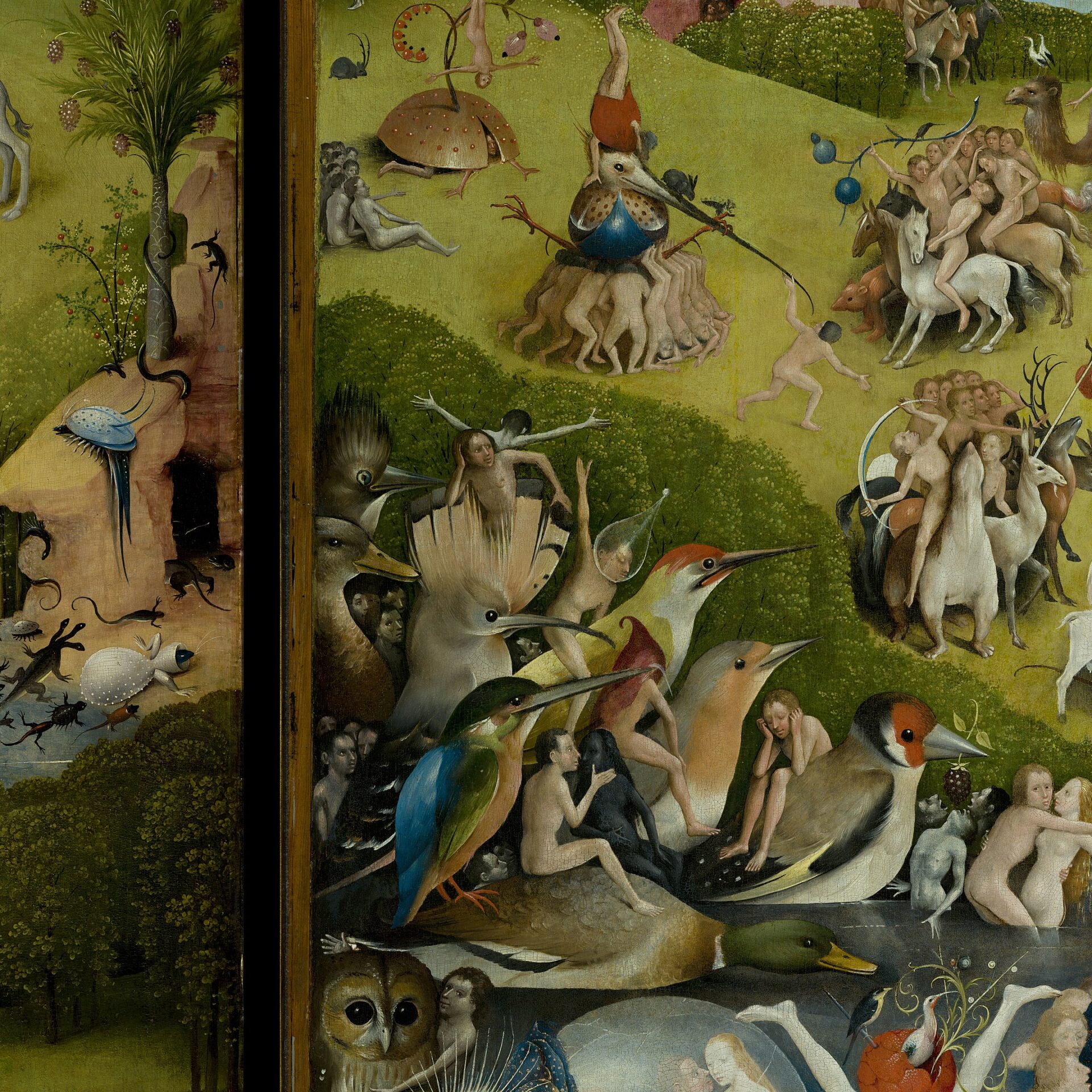
De Bruyn 2023a
“Op verkenning in de Tuin der Lusten 8 – De hop, een zeer vieze vogel”
(Eric De Bruyn) 2023
[in: Bossche Kringen, vol. 10, nr. 1 (March 2023), pp. 37-40]
One of the unusually large birds near the left edge of the central panel of the Garden of Delights triptych is a hoopoo. During the Middle Ages, this bird suffered from a very bad (symbolical) reputation. It was considered a very beautiful, but also very dirty and stinking bird, partial to excrements and associated with magical practices and nightmares filled with demons. Moreover, it was one of the forbidden birds in the Old Testament, and it could symbolise the vain person who tempts others into sin, horny women, and frivolous noblemen. And the Middle Dutch word hoppe could mean both ‘hoopoo’ and ‘whore’.
With Bosch, the hoopoo is carrying two men in its crest. The one in the back is spreading his arms (thus reminding the viewer of the crucified Christ), whereas the one in the front is watching the riders circling around the pond with women. Apparently, around 1500 there was an iconographical topos in which a hoopoo is turning away from Christ, thus representing Christ’s enemies. Furthermore, in late medieval texts dancers who are spreading their arms in ecstacy are rebuked by being reminded that the crucified Christ also had to spread His arms. Was Bosch aware of all this, and did he paint the two men in the hoopoo’s crest as a parody of Christ?
[explicit 10th March 2023 – Eric De Bruyn]